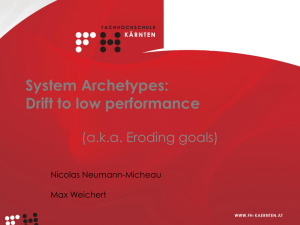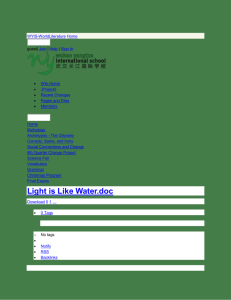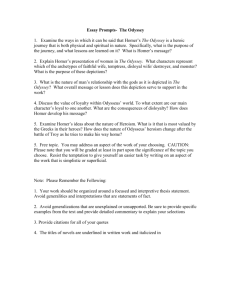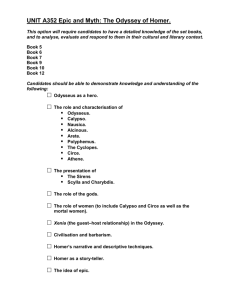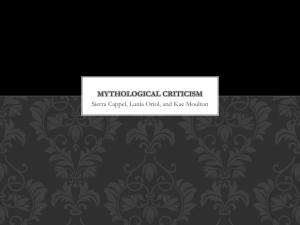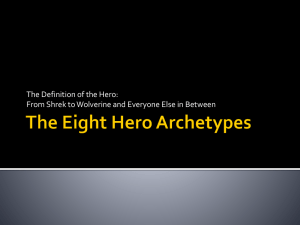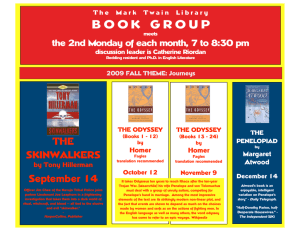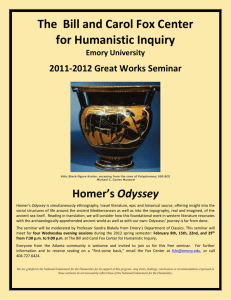Lesson Plan for the Odyssey
advertisement
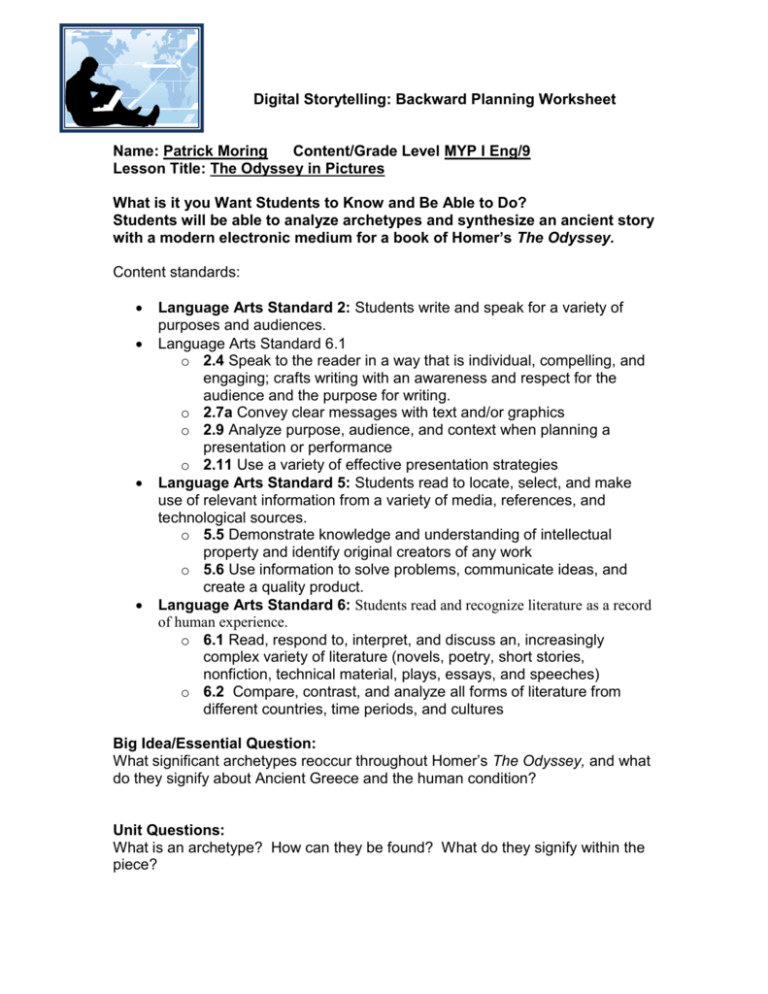
Digital Storytelling: Backward Planning Worksheet Name: Patrick Moring Content/Grade Level MYP I Eng/9 Lesson Title: The Odyssey in Pictures What is it you Want Students to Know and Be Able to Do? Students will be able to analyze archetypes and synthesize an ancient story with a modern electronic medium for a book of Homer’s The Odyssey. Content standards: Language Arts Standard 2: Students write and speak for a variety of purposes and audiences. Language Arts Standard 6.1 o 2.4 Speak to the reader in a way that is individual, compelling, and engaging; crafts writing with an awareness and respect for the audience and the purpose for writing. o 2.7a Convey clear messages with text and/or graphics o 2.9 Analyze purpose, audience, and context when planning a presentation or performance o 2.11 Use a variety of effective presentation strategies Language Arts Standard 5: Students read to locate, select, and make use of relevant information from a variety of media, references, and technological sources. o 5.5 Demonstrate knowledge and understanding of intellectual property and identify original creators of any work o 5.6 Use information to solve problems, communicate ideas, and create a quality product. Language Arts Standard 6: Students read and recognize literature as a record of human experience. o 6.1 Read, respond to, interpret, and discuss an, increasingly complex variety of literature (novels, poetry, short stories, nonfiction, technical material, plays, essays, and speeches) o 6.2 Compare, contrast, and analyze all forms of literature from different countries, time periods, and cultures Big Idea/Essential Question: What significant archetypes reoccur throughout Homer’s The Odyssey, and what do they signify about Ancient Greece and the human condition? Unit Questions: What is an archetype? How can they be found? What do they signify within the piece? Content/Guiding Questions: What did Odysseus symbolize for the Ancient Greeks? How is The Odyssey propaganda for the Ancient Greek society (anti-feminist, cultural concepts, consequences of upsetting the gods, battling fate, etc.)? Which archetypes do we see more than once, and what do they signify within the piece? Within the society? How will you know they know it? (Formative & Summative Assessment Strategies) The students will be given reading check quizzes, formal and informal in-class assessments, Socratic seminars, and will eventually produce a picture story using Photo Story 3 or Voice Thread that interprets the events and archetypes within one book of the Odyssey. Formative Assessments: Storyboard (rubric) Quizzes In-class discussions One-pager interpretive assignments (rubric) Summative Assessments: Final Photo Story/Voice Thread Project Rubrics Unit Test with In-class 5 Paragraph Essay The “hook” – Show Photo Story of The Iliad that is teacher produced. Use music, narration, and good transitioning technique. Keep it brief, and make sure it is something that will hold the students’ attention. Then show them the Homer vs. Homer video thread. Allow them to understand that they will be producing a similar final project that isn’t as long, but is otherwise comparable. Activities/Timeline: Day 1-2: Show Iliad Photo Story and Homer vs. Homer media presentations. Hand out the syllabus and project rubrics. Go over all of it with the students and explain unit project guidelines. Explain archetypes and power point presentation ancient archetypes and the modern tie-ins. Read book 1-2 with them, pulling out examples of archetypes. Day 3-4: Finish books 1-2. Have the students read 3-4 in groups, and make them responsible for finding examples of archetypes within the piece. Explain and assign a one-pager assignment, and show them how they would have done one with the lists they produced in groups. Assign books 5-6 as homework reading and tell them they need to do a one-pager for each book that identifies an archetype and its significance. Day 5-6: Quiz of first 6 books to check for reading and comprehension. Collect one-pagers and discuss. Assign books 7-8 as homework and go to the computer lab for Photo Shop 3/Voice Thread tutorials. Day 7-8: Quiz on 7-8. Work on Storyboards in-class. Assign books 9-10 for homework. Day 9-10: Quiz on books 9-10. Go to lab for work days for projects. Assign 1112 as homework, along with a one-pager from the reading. Day 11-12: Quiz on 11-12. Work days in lab. Projects due the following day. Day 13-14: Presentations to class of finished pieces. Day 15: In-class essay assignment. Day 16: Unit Test
